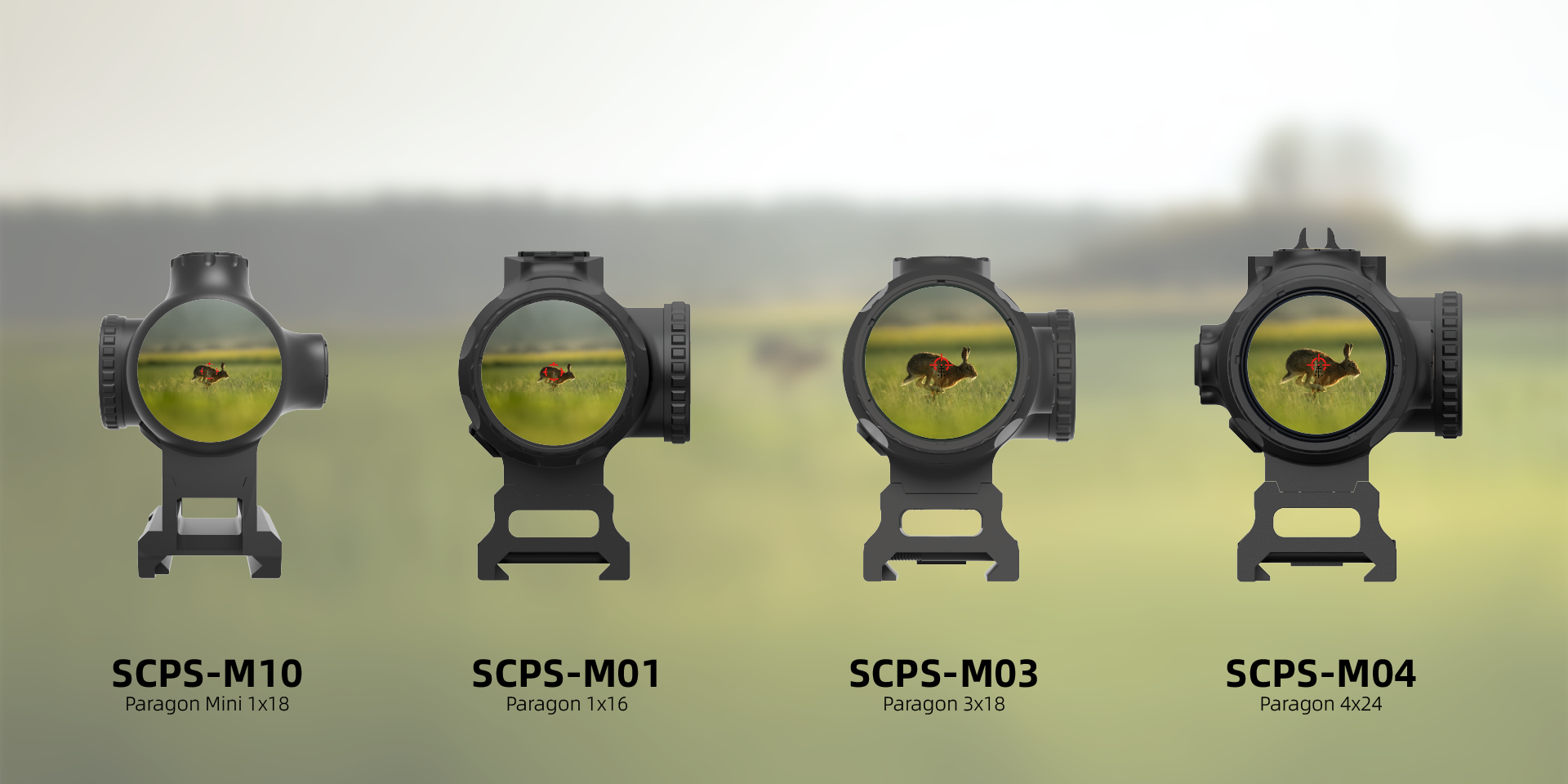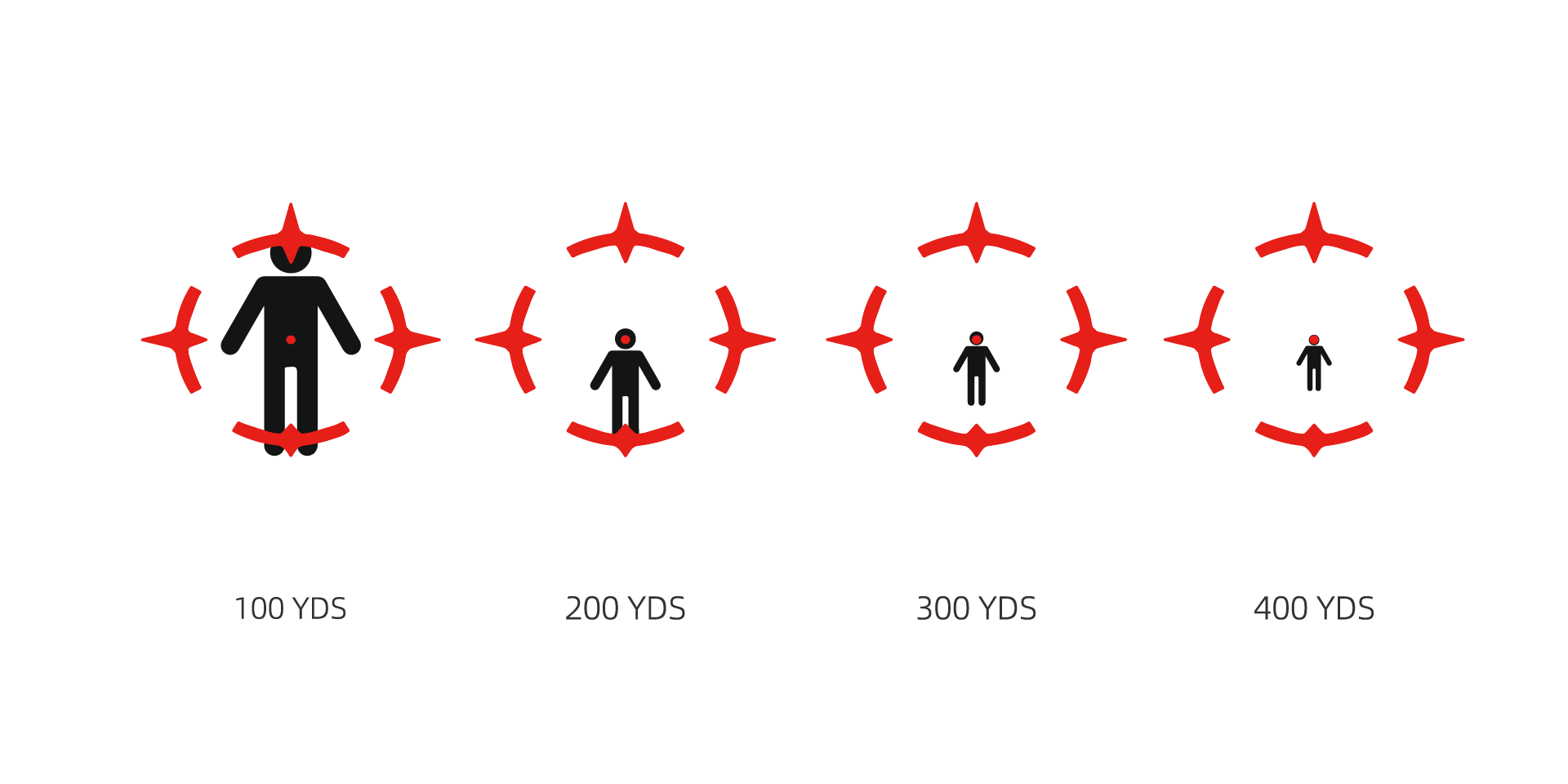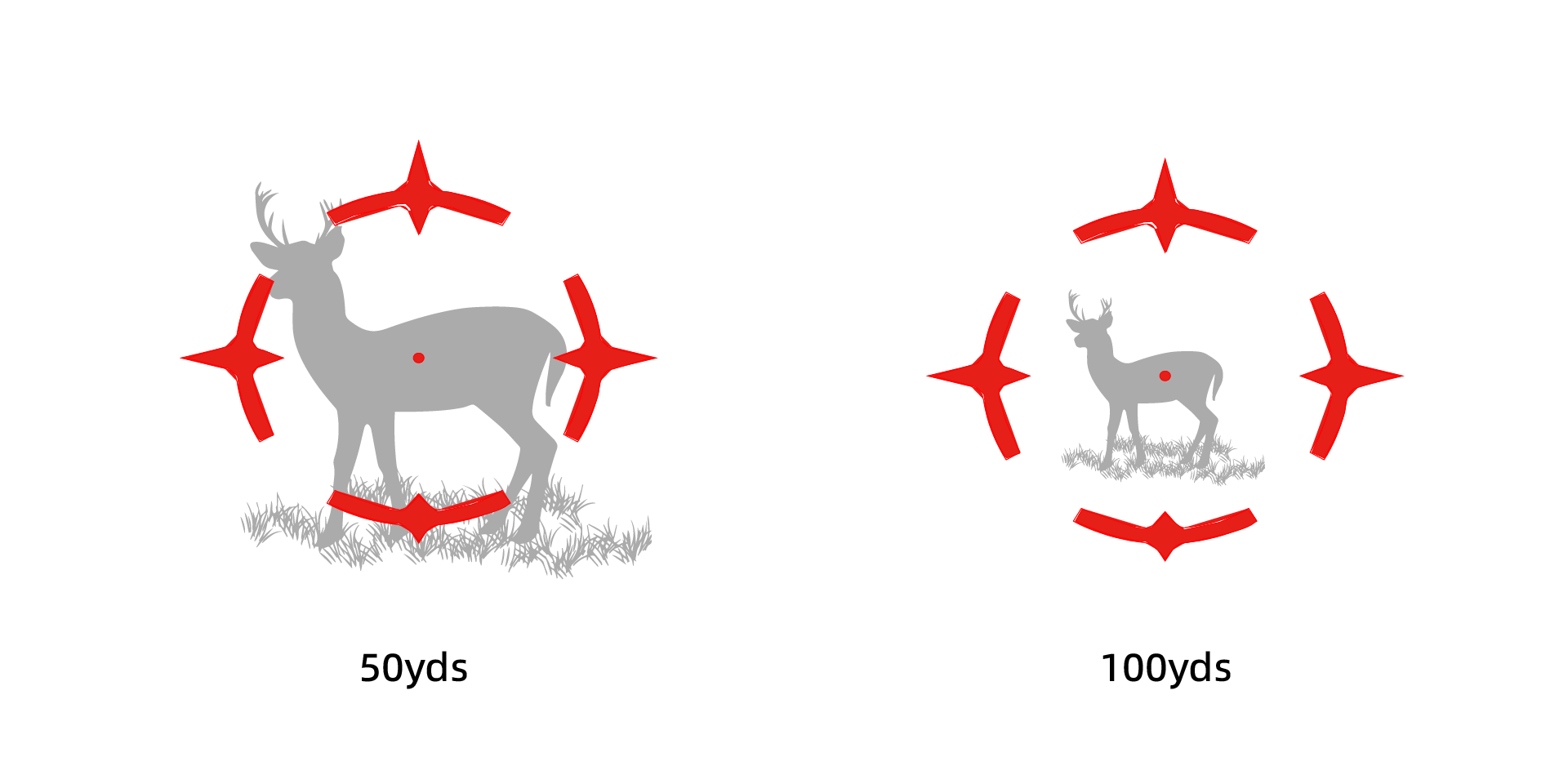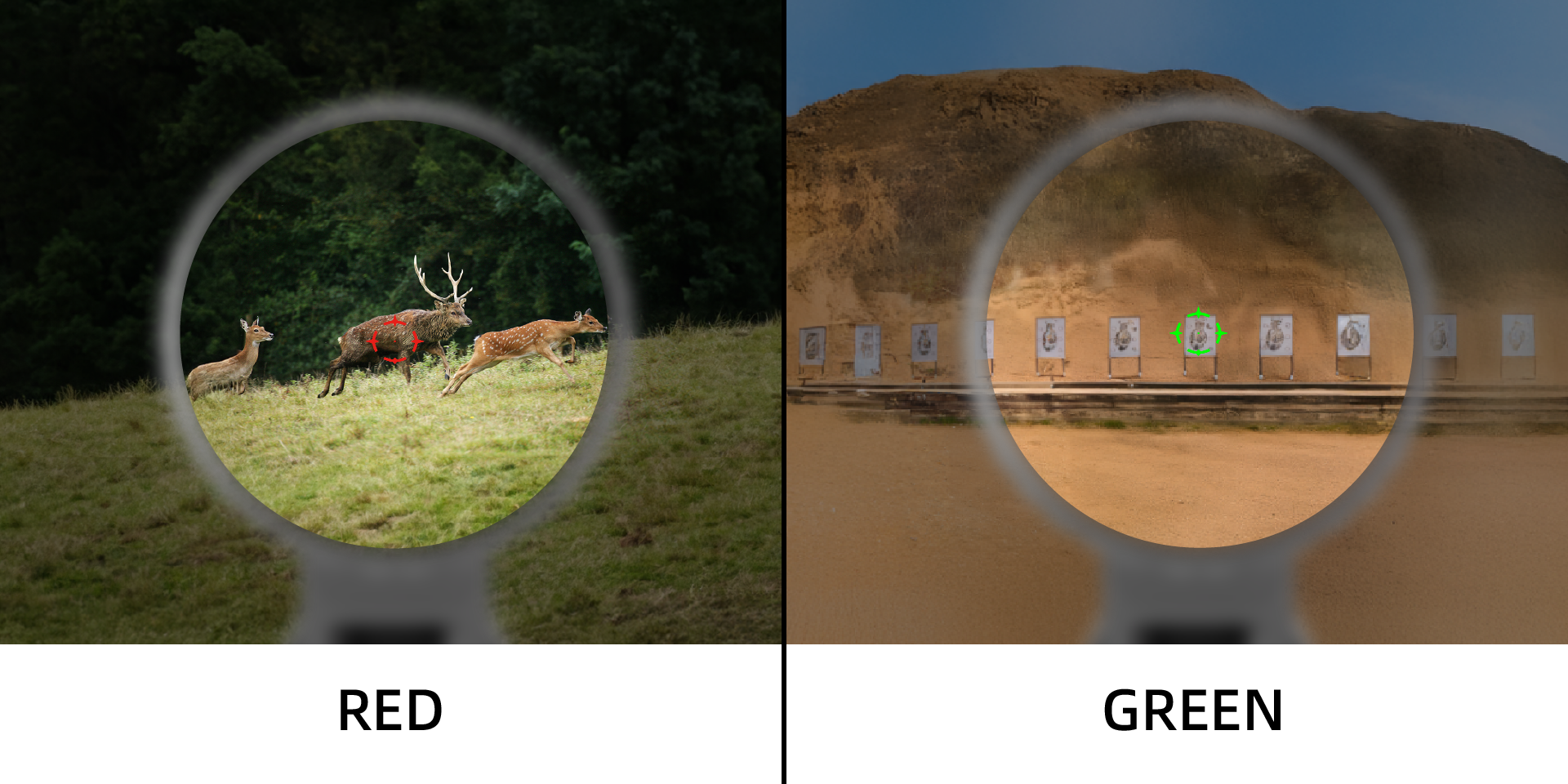As we covered in our previous comparison, prism scopes outperform red dots in some way, especially for people with astigmatism. But many shooters hesitate due to size concerns. Meet the M10, our revolutionary red dot-sized prism scope that eliminates this compromise.
Our next-generation SCPS-M10 prism scope redefines compact optics with major upgrades over the M01:
Key Improvements:
More Compact - Just 60.5mm long (vs. M01's 75mm)
Lighter Weight - 178g / 6.28oz (vs. M01‘s 230g / 8.1oz)
Brighter Image - 18mm objective lens (vs. M01's 16mm) for better light transmission
Crisper Optics - Fully multi-coated lenses deliver superior clarity
Same Rugged Build - Maintains all prism scope advantages in a smaller form
Larger Eyebox - Important for extended shooting time and fast target acquisition
More Reticle Color Options: Green and red for various light conditions, background condition and eye condition
Other features of prism scopes we would love to mention:
The M10's IP67 rating means it is completely dustproof, and can withstand submersion in water up to 1m for 30 minutes. While you're unlikely to shoot during a heavy rainy day or throw the scope into the swimming pool, this ruggedness makes cleaning a breeze. Just rinse under running water after muddy matches or dusty training to wash out the dirt and keep your optic clear.
1000G Shockproof guarantees the scope remaining accurate and reliable even after prolonged use in rugged conditions. With 1000G shockproof rating, the M10 handles recoil from .223 to .308 with ease — proven to maintain zero through thousands of rounds.
A wide field of view of 26.3m @ 100m (vs. M01's 25.4m @ 100m), is siginficant during dynamic shooting scenarios.
M10 owns a true 1x power, which further expands your field of view to appear unlimited. You are allowed to shoot with two eyes open for catching moving target and rapid aiming.

Many of you may still be concerned about the eyebox of prism scopes. Most prism scopes on the market have a relatively limited eyebox. For a deeper explanation, check out our previous blog post on this topic. To keep things simple here, the size of the eyebox is mainly determined by three factors: eye relief, exit pupil, and the design of the eyepiece. In general, longer eye relief results in a larger eyebox. The M10 features an eye relief of 95mm to 100mm, which is longer than the M01's 75mm. The exit pupil is calculated by dividing the objective lens diameter by the magnification. With an 18mm objective lens, the M10 has a larger exit pupil than the M01's 16mm lens. In addition, the M10 has an improved eyepiece design and construction compared to the M01. We guarantee that the M10 offers a significantly larger eyebox. A larger eyebox would largely benefit your shooting, including greater flexibility in shooting positions, quicker acquisition of a full, clear sight picture in dynamic situations, and improved situational awareness.
Reticle Design of the M10 – VEP-CDR
The M10 uses the VEP-CDR reticle, the same design found in the M01. It features an interrupted circle with a center dot, designed to quickly draw the shooter’s focus. The center dot is 2 MOA, making it suitable for precise aiming at both 50 yards and 200 yards when using a .223 caliber bullet.
Why 50 and 200 yards? These are common zeroing distances in a 50/200 yard zero setup, which we have explained in detail in our previous blog post on scope adjustment.
Another useful aiming point is the sharp bottom edge of the ring, which can be used for close-range shots at 7 yards — perfect for CQB-style situations. For practice shooting within 100 yards, the 2 MOA dot is ideal, considering that the bullseye on a standard target is approximately 5 cm in diameter.

Estimating Range with the 68 MOA Ring
The 68 MOA diameter ring on the reticle can also serve as a quick-ranging tool. Here's how it works:
An average adult is around 5'8" (68 inches) tall, which fits perfectly within the ring at 100 yards.
If an adult appears to fill half the ring, they are about 200 yards away. If they fill one-third of the ring, they are roughly 300 yards away. If they fill one-fourth of the ring, they are around 400 yards away.
We do not recommend shooting beyond 400 yards with a 1x prism scope, as accuracy and clarity may be compromised.

Ranging Deer with the Reticle
A typical deer is about 2'8" to 3' (81–91 cm) in length. If a deer appears to fill half the ring, it’s approximately 100 yards away. If it fills the entire ring, it’s likely 50 yards away.

The reticle features 11 brightness levels of illumination, making it easy to adapt to low-light or dim shooting conditions. Another key feature is the availability of two color options: red and green. For users with certain visual sensitivities or eye conditions, the green reticle often provides better visibility and contrast. In fact, green dots generally outperform red in a wide range of lighting environments — from bright daylight to low-light settings. Due to the human eye's natural sensitivity to green, green dots reduce eye fatigue during prolonged use. They also remain clearly visible in desert or sandy environments, where red dots may blend in more easily.

